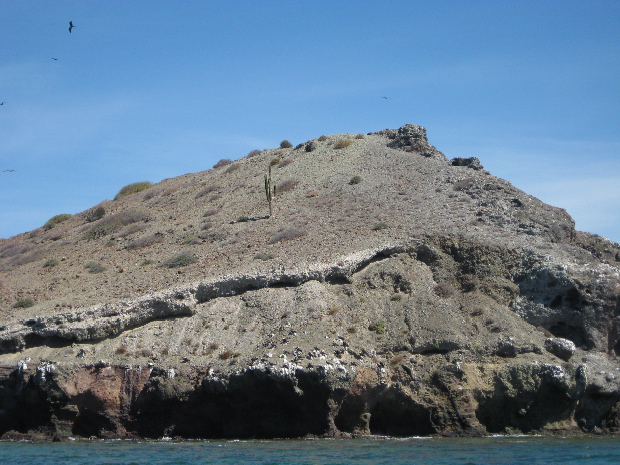
The
early Spanish explorers of Mexico, who almost always traveled with
priests, had a habit of giving religious names to the places they
“discovered” — which was fortuitous with respect to the region of the
Mar de Cortés, which has an unearthly, supernatural beauty. It's
hard to imagine talking about, even thinking about, the Isla Espíritu
Santo, Holy Spirit Island, under some more prosaic name.
It's a severe, haunted, sublime place. When the Spanish first
arrived there were about 300 Indians living there — they must have
been hard, solitary folk. Disease or some other European-borne
catastrophe left the island unpopulated until a French entrepreneur set
up a camp there for pearl fishing around the time of the outbreak of
the Mexican Revolution. Disease again intervened, wiping out the
pearl-oyster beds throughout the Mar de Cortés between 1936 and 1941.
Today there are a few shacks used by local fishermen (with solar panels
on their roofs for electricity) and a luxury tent camp for wealthy tourists.
There is something shocking, even frightening about the landscape of
Espíritu Santo. It's a place for gods and monsters, not
people. I kept thinking that when blind Homer imagined the
settings of The Odyssey in his mind's eye, they probably often resembled the Isla Espíritu Santo.
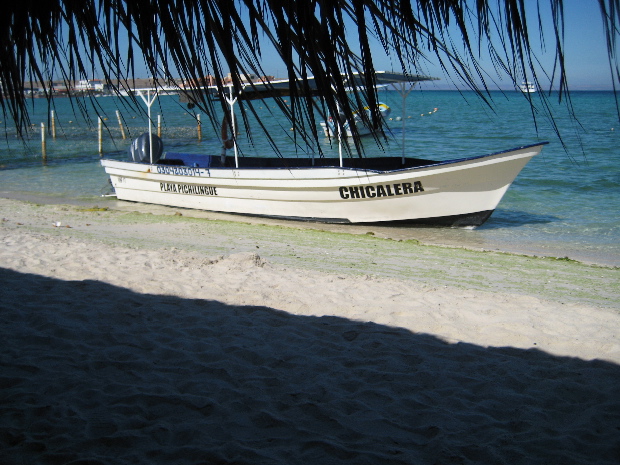
We rented a panga, with a captain, at Pichilingue beach for a cruise to
the island.
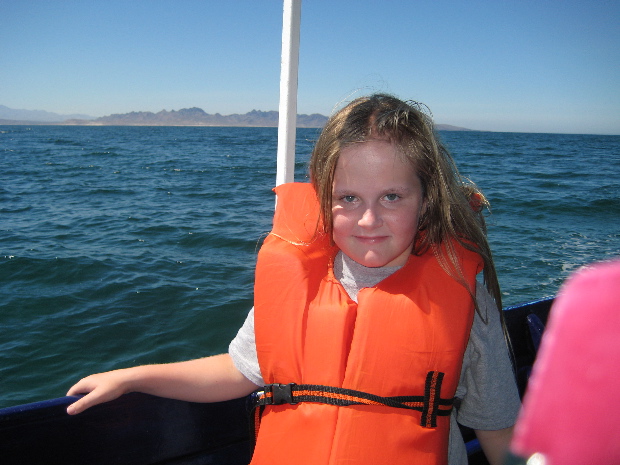
It was a magical journey — we flew like the wind
across miles of open sea to reach the island, then circumnavigated it
slowly, pausing to marvel at many wonders.
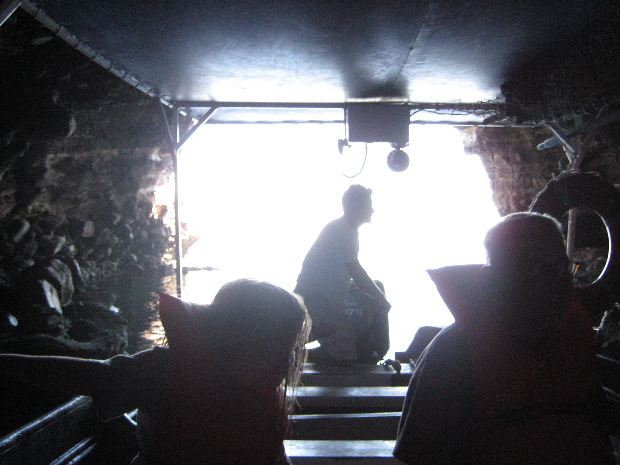
The captain took us
at speed through rock-bound channels barely wider than his boat, into caves and
along the seemingly endless curves of totally empty beaches, running the boat close in to the shore for dramatic effect.
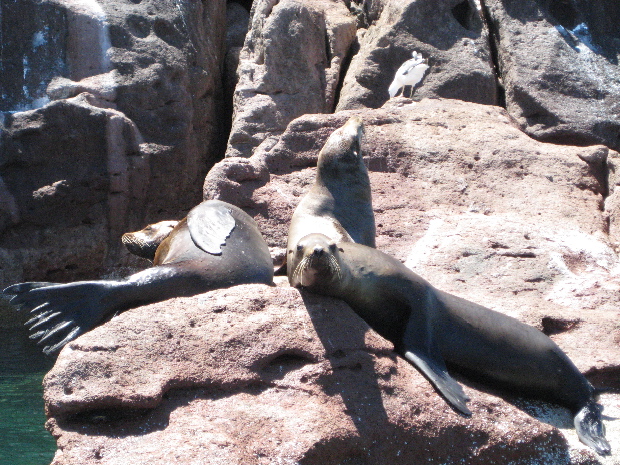
We stopped to snorkel at a small island populated by hundreds of
braying sea lions, who swam close to us when we were in the water, eying us
ironically. “You don't really think you can pass muster as an
aquatic mammal?” they seemed to say.
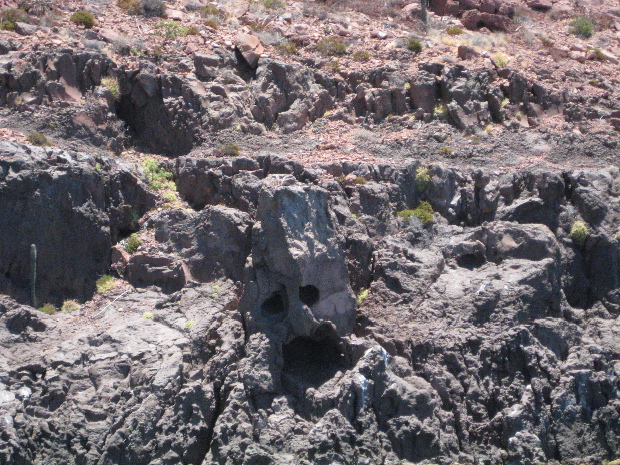
We stopped to look at what appears to be a mask carved into the rock
face of the island. That seemed like an ironic gesture by nature
itself, vaguely threatening.
Finally we came ashore at a lovely beach. The captain set up a
table under an umbrella and produced lunch — ham and cheese
sandwiches, exceptionally fine fish ceviche and pickled marlin. We swam and ate and
felt utterly elated.
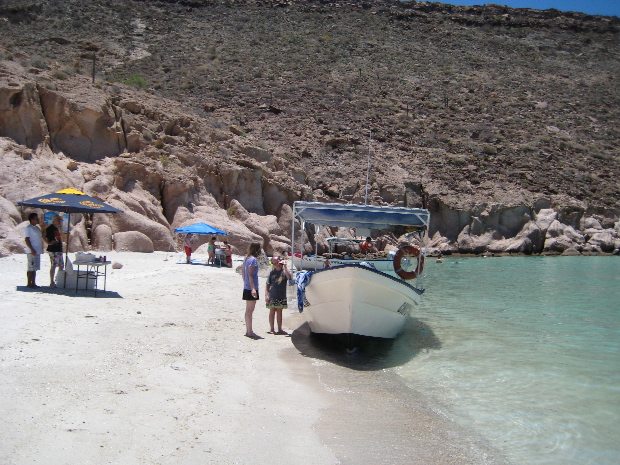
It was good to go to the island, and good to leave it — it didn't seem
like a place that wanted to be visited for too long by the children of
men. All the same it might be interesting to camp out on it for a night
— like spending a night in a haunted house. I imagine one would
hear exceedingly strange voices in the wind.
For previous Baja California trip reports, go here.
[Photos © 2007 Harry Rossi]
